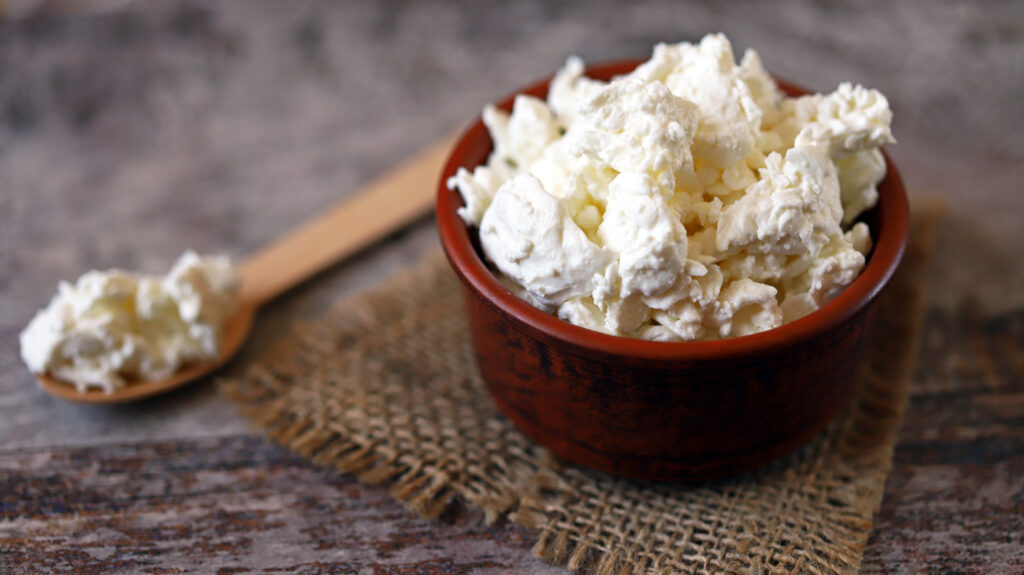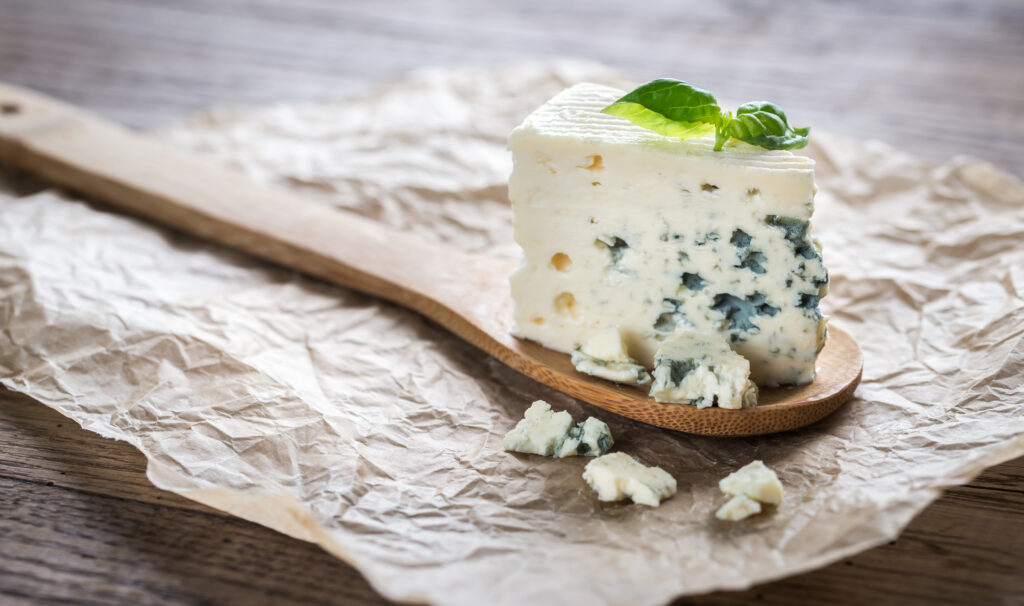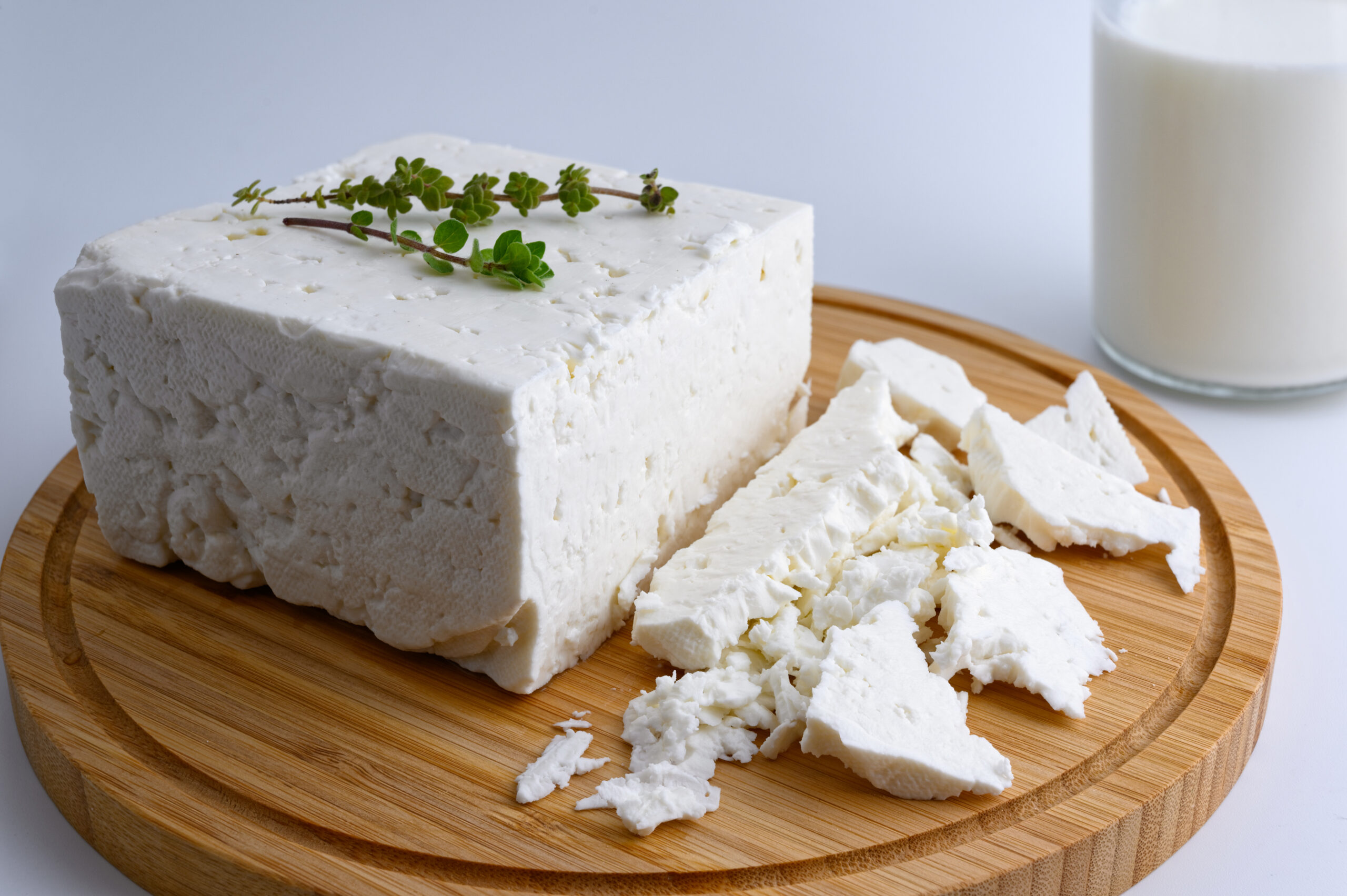Some of the links on this page are affiliate links, which means that Buzzy Kitchen earns commission from purchases made – at absolutely no extra cost to you. Thank you so much for supporting Buzzy Kitchen!
Feta cheese is a common addition to several recipes, including those from the Mediterranean region. What happens if you don’t have any at home, though? Well, the good news is, there are feta cheese substitutions that will work just as well.
And for once, there’s no bad news! Let’s take a look, shall we?
What Type of Cheese is Feta Cheese?
Feta cheese is a white cheese that originates from Greece and is commonly used in dishes with Mediterranean ingredients or flavours. It is traditionally made from sheep’s milk but is sometimes made with a combination of both sheep’s and goat’s milk. Cow’s milk is a modern-day variety.
It is classed as a soft or semi-soft pickled (or brined) curd cheese and is known for having a texture that is as crumbly as it is soft. Feta cheese is also creamy, has a bold flavour, and is both strong and salty. The latter is because the cheese is pickled or brined.
The scent is described as strong and nutty.
What Should I Look for in Feta Cheese Substitutions?
The feta substitutes you use will heavily depend on what you’re cooking, for the most part. Some recipes call for a crumbly cheese, at which point there are other crumbly cheeses you could substitute it for.
What’s the recipe? How is the cheese being used (so to speak)? That will play a huge factor.
List of 8 Feta Cheese Substitutions
Not all these feta cheese substitutions will work in all recipes, but they all have characteristics and features that place them parallel to the Greek cheese. The best one for your recipe will be the one that has the right characteristics – such as crumbliness, or salty taste, etc.
1: Halloumi
Halloumi is a versatile cheese with a similar salty flavour to feta. It’s a great option if you want an alternative that can be grilled or pan-fried and holds its shape well. Both feta and halloumi are Mediterranean, although halloumi is from Cyprus and feta is from Greece.
Read more: What’s the Difference Between Feta and Halloumi Cheese?
2: Vegan Feta Cheese
Because of how it’s made and what is in it, feta cheese is neither vegan nor vegetarian. (Sorry about that.) Thankfully, with the plant-based life a hot topic on everyone’s lips these days, there are more vegan and vegetarian-friendly cheese types than ever before.
3: Goat’s Milk Cheese
Feta cheese is made with goat’s milk, so goat’s milk cheese is a great stand-in when you don’t have feta to hand.
The two cheeses are similar in many ways. They are both:
- Crumbly
- Soft
- Creamy
- Strong in flavour
Pyramide Goats Cheese – Fine Food Specialist
4: Paneer
A type of Indian cheese, paneer, has a mild flavour and a firm, crumbly texture. While it doesn’t have the same saltiness as feta, it can be a suitable replacement in some dishes, especially in vegetarian or Indian-inspired recipes.
Paneer is made by curdling milk with lemon juice or vinegar, while feta is made by coagulating milk with rennet and then aging it in brine. Because of these differences, the two cheeses have different texture and taste profiles, which means you can’t always use one instead of the other in a recipe.
5: Bulgarian Sirene
This cheese is similar to feta and often used in Balkan and Mediterranean cuisines. It has a slightly milder taste but can work well in salads and other dishes that call for feta.
Bulgarian Sirene, often referred to simply as “sirene,” is a type of white brined cheese that originates from Bulgaria. It is one of the most popular and traditional cheeses in Bulgarian cuisine, and is made from sheep’s or cow’s milk, or a combination of the two.
This cheese doesn’t have quite the salty finish that feta does, and it’s creamier, too.
6: Cottage Cheese
While it won’t have the exact taste and texture of feta, cottage cheese can be used as a substitute in certain recipes where the crumbly texture is desired.
This dairy product is known for its creamy and lumpy texture. It has a mild, slightly tangy taste, low fat content, high protein content, a long shelf life, and low lactose. Cottage cheese is a good source of calcium, phosphorus, and B vitamins, making it a nutritious addition to a balanced diet.

7: Strong Cheddar Cheese
Mild cheddar can be too rubbery to crumble, but strong cheddars have a great, crumbly texture that works in the place of feta cheese. Being such as a popular option in the UK, it’s bound to please almost everyone.
There are varying degrees of ‘strong’ when it comes to cheddar, so I do recommend trying one or two, to see which one you like best. Remember, too: strong cheddar has more taste than feta, so you will need to take that into account.
8: Stilton and Other Blue Cheese
Blue cheeses, such as stilton, have a super strong flavour that not everyone enjoys. (I hate it.) If you’re a fan of it, you can use it as a feta substitute for the crumbliness.
I wouldn’t recommend serving up blue cheese as a feta alternative to people who aren’t expecting it. If they don’t like it, they’re not going to be impressed.

Remember that each substitute may have its own unique flavour and texture profile, so it’s essential to consider the specific role of feta in your recipe and choose the substitute that best complements the overall dish. Additionally, personal taste preferences play a significant role in selecting the most suitable alternative.
You might also look these:
- What is the UK Equivalent of Pizza Cheese?
- Best Vegan Substitutes for Mozzarella Cheese
- 101 Gifts For Cheese Lovers 2022 Edition

